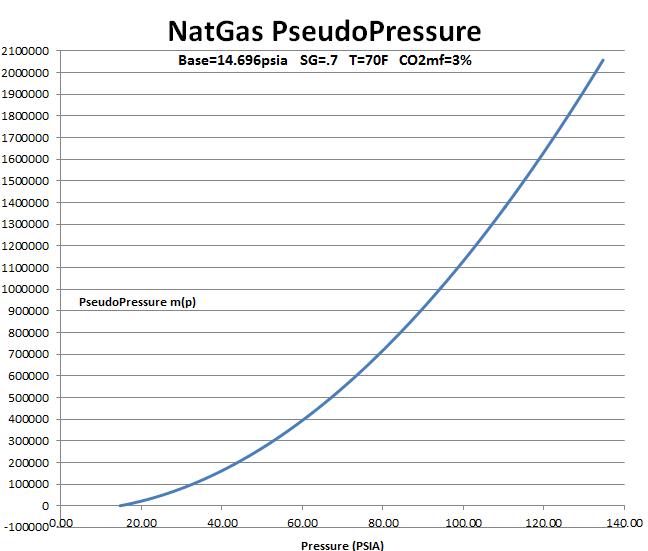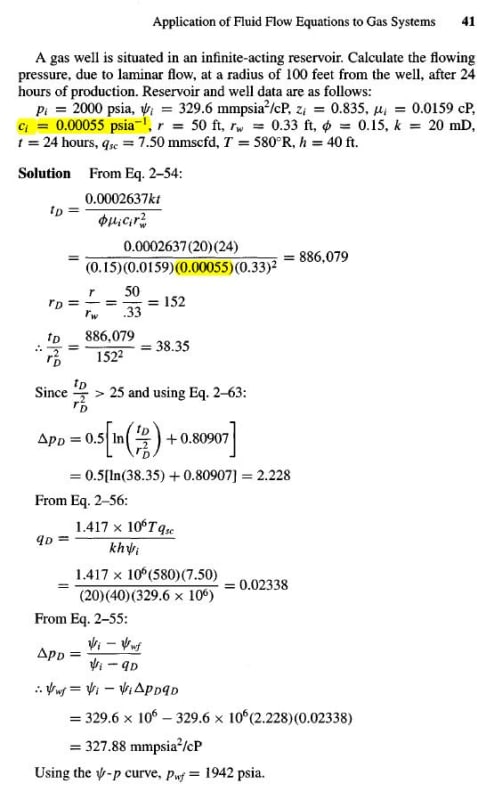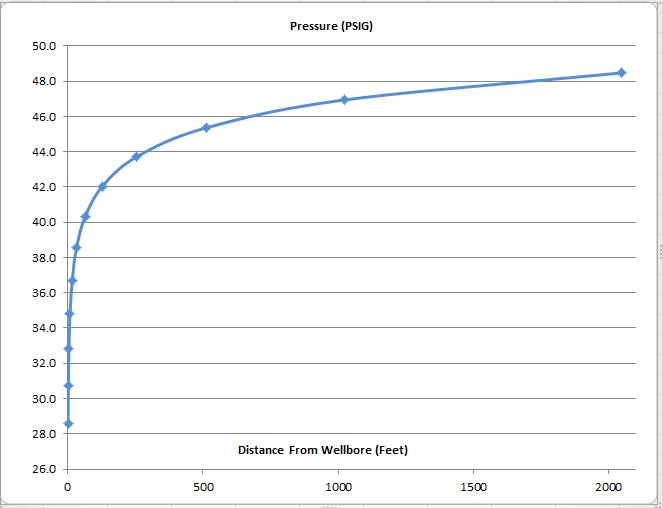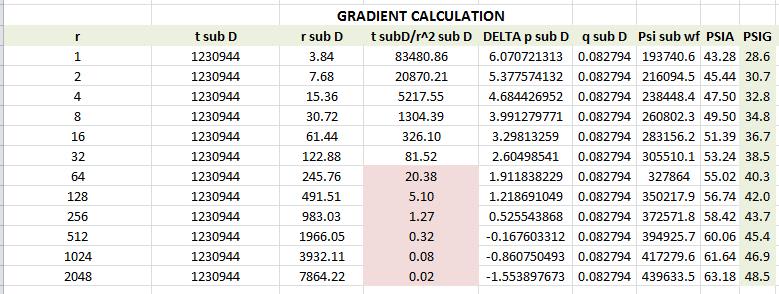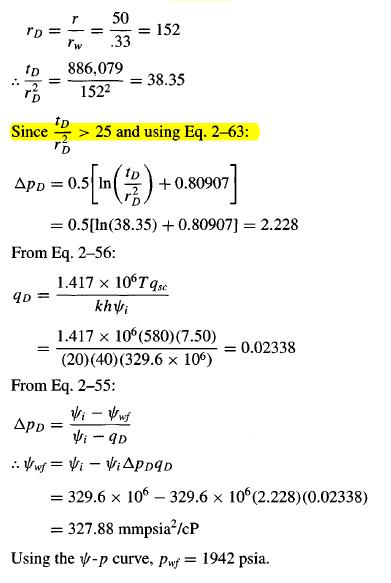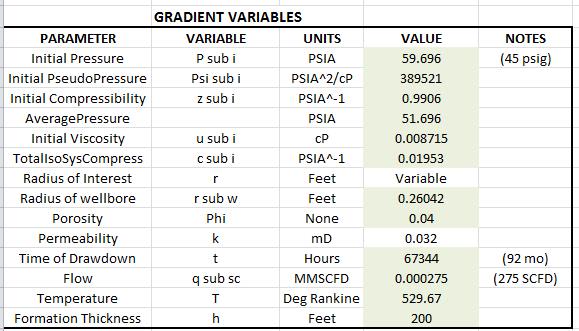A natural gas well with a 6.25" bore was gauged at 45 psig after 20+ years of being shut in.
For eight years, an estimated 101.1MCF has been delivered to the burner tip annually.
(An average daily draw of 277 SCFD is based upon a meter installed last year to capture total & summer=200/winter=355 SCFD variation).
There has been zero water collected in the drip and there have been no freeze off problems.
There is no pressure data available for the first four years.
For the past four years, wellhead pressure has stabilized at 30 psig, plus or minus 1.25 psig winter to summer.
So it appears that the flow through the formation has achieved an annualized, steady state and the surrounding formation could reasonably assumed
to be cylindrical with sufficient surrounding pressure to sustain this small flow. (fully realizing the uncertainty, but having no better information to suggest another)
Since there are no other wells in the formation within two miles and no known production in the region, it seems possible that at some reasonable radius back from the bore, the pressure should approach the original 45 psig, long period, shut in pressure.
The reason for the calculation is to get a feel for the sustainability/value of the well. The confidence and value to the owner would be much higher if it was known that the rock pressure depletion radius extends only 50 feet rather than 500 feet or more. A calculation or windage estimate with an accuracy level in the 20-30% range would be quite satisfactory over no current information at all.
What calculation should I use to get near to what this radius is likely to be?
Further formation data as can be best determined:
height of formation = 200' (Well report)
description - Top of the Ordovician Knox, tan, sucrosic dolomite (Well report)
porosity = 4% (Drill log)
temperature = 73 degF (Drill log)
permeability = 3.5 mD (Conservative estimate from regional historical records ranging 0.5 to 10mD)
All suggestions and comments are appreciated!
Best regards,
B
For eight years, an estimated 101.1MCF has been delivered to the burner tip annually.
(An average daily draw of 277 SCFD is based upon a meter installed last year to capture total & summer=200/winter=355 SCFD variation).
There has been zero water collected in the drip and there have been no freeze off problems.
There is no pressure data available for the first four years.
For the past four years, wellhead pressure has stabilized at 30 psig, plus or minus 1.25 psig winter to summer.
So it appears that the flow through the formation has achieved an annualized, steady state and the surrounding formation could reasonably assumed
to be cylindrical with sufficient surrounding pressure to sustain this small flow. (fully realizing the uncertainty, but having no better information to suggest another)
Since there are no other wells in the formation within two miles and no known production in the region, it seems possible that at some reasonable radius back from the bore, the pressure should approach the original 45 psig, long period, shut in pressure.
The reason for the calculation is to get a feel for the sustainability/value of the well. The confidence and value to the owner would be much higher if it was known that the rock pressure depletion radius extends only 50 feet rather than 500 feet or more. A calculation or windage estimate with an accuracy level in the 20-30% range would be quite satisfactory over no current information at all.
What calculation should I use to get near to what this radius is likely to be?
Further formation data as can be best determined:
height of formation = 200' (Well report)
description - Top of the Ordovician Knox, tan, sucrosic dolomite (Well report)
porosity = 4% (Drill log)
temperature = 73 degF (Drill log)
permeability = 3.5 mD (Conservative estimate from regional historical records ranging 0.5 to 10mD)
All suggestions and comments are appreciated!
Best regards,
B

